This piece is part of a series remembering the life, career, and legacy of Helmut (Hal) Sonnenfeldt — a member of the National Security Council, counselor at the Department of State, scholar at the Johns Hopkins School of Advanced International Studies (SAIS), and Brookings expert.
It was totally unintentional.
At an off-the-record gathering of American ambassadors in December 1975, the counselor of the State Department was credited with creating a new and highly controversial policy toward Eastern Europe — a “doctrine,” no less.
Three months later, when it was leaked and dramatically christened the “Sonnenfeldt Doctrine,” all the doors of hell opened in Washington. GOP conservatives instinctively denounced it and its author, Helmut “Hal” Sonnenfeldt. Was the U.S. quietly abandoning its support of the “captive nations” of Eastern Europe, a promise it loudly proclaimed in the 1950s? A flustered President Gerald Ford demanded an explanation; he knew nothing about this new “doctrine.” An embarrassed Secretary of State Henry Kissinger, one of Sonnenfeldt’s closest friends and associates, was furious, finally coming up with some loosely-worded mumbo jumbo suggesting that Sonnenfeldt did not quite mean what he was quoted as saying. Quite the opposite. “What he meant to say,” Kissinger later explained, “is that if you let things develop, they will eventually secede,” meaning the Eastern European satellites would “eventually” break away from Moscow’s control and again become independent nations. And this would happen without war.
What Sonnenfeldt had casually conveyed to the ambassadors, not in the form of a written speech but as helpful reflections on policy, was his understanding of a vision he and Kissinger shared about the future political evolution of Russia’s Eastern European satellites. “It must be our policy,” Sonnenfeldt reportedly said, “to strive for an evolution that makes the relationship between the East Europeans and the Soviet Union an organic one.” And what, you might have (justifiably) asked, does that mean?
Years later, Sonnenfeldt often laughed when he was asked to explain his use of such words as “evolution” and “organic.” “Some graduate student is going to have a lot of fun with it,” he joked. At the time, he knew he was delving into sensitive diplomatic terrain, but like his friend the secretary of state, Sonnenfeldt enjoyed supreme self-confidence, loving the limelight and showing off his genuine brilliance. He might have deliberately used scholarly words and language to leave everyone mighty impressed, but not necessarily better informed, about policy. He certainly was not proclaiming a new “doctrine.” Better than anyone, he knew that if a new “doctrine” were to be proclaimed, it would not have been Sonnenfeldt who did the proclaiming — it would have been Kissinger.
When Washington responded in grumbling confusion about the newly leaked “Sonnenfeldt Doctrine,” “Kissinger’s Kissinger” — as Sonnenfeldt was often described — had to explain that “we do not accept” the Eastern Europeans as a “sealed-off, exclusive presence for anyone,” meaning in this case the Soviet Union. An instinctive hardliner, Sonnenfeldt strongly believed that the Eastern Europeans would “eventually” become democratic and independent — and the sooner the better. But he sidestepped the option of war to achieve that objective.
A more meaningful explanation of American policy toward Eastern Europe was actually articulated a few months earlier, on August 1, 1975, when 35 nations from East and West signed the Helsinki Accords, promising two mutually contradictory goals: first, to assuage Moscow’s chronic fears, non-intervention in the internal affairs of all nations; and second, to satisfy the Sonnenfeldts of the West, demonstrable democratic reform in all of them, specifically those under Soviet domination. Sonnenfeldt was one of the principal actors driving the Helsinki Accords to completion. It was a highlight of his career.
Even so, Sonnenfeldt was often hounded by a handful of congressional conservatives who simply did not trust him. His name, attached to this fictitious “doctrine,” only deepened their suspicions that he was reaching too far, pushing too hard. They remembered that in 1973, when Sonnenfeldt’s friend, George Shultz, was being promoted from budget director to secretary of the treasury, he wanted to appoint Sonnenfeldt to be his deputy secretary — but they killed the appointment, claiming he had leaked top-secret information to the press. In part, armed with this excuse, the FBI tapped Sonnenfeldt’s home phone, a sure sign of official distrust, but found nothing to confirm their suspicions. Interestingly, neither the tap nor that chronic distrust blocked Sonnenfeldt from being named to a top White House position, in which he served honorably for years. He was Kissinger’s principal authority on East-West relations, focusing on the Soviet Union, a rather significant job in the midst of the Cold War. In time, he was widely recognized as a key figure in helping to conceive and negotiate historic nuclear arms control agreements between the two superpowers, which became the basis for the overall policy of détente.
In early 1972, during the Vietnam War, détente was put to one of its most severe tests: Could President Nixon bomb North Vietnam while also arranging a summit with the Russians? Nixon considered canceling the summit so he could intensify the bombing, so committed was he to ending the Vietnam War on his terms. In White House deliberations, Sonnenfeldt argued he could have both — the summit and the bombing — and he proved to be right. The Russians ultimately blinked. For them, it was more important to improve relations with the United States than to help Hanoi.
Sonnenfeldt had apparently developed a good feel for how Soviet leader Leonid Brezhnev would react to American actions, rhetoric, and diplomacy. Sometimes the issue was war or peace; at other times it was real estate.
Yes, real estate.
For example, in 1972, Sonnenfeldt accompanied Kissinger on a boar-hunting expedition with Brezhnev and other Soviet leaders. He did well. “With those telescopic sights on the Russian guns,” Sonnenfeldt recalled, “it was almost impossible to miss.” It remains a super-secret at the State Department how many boars Sonnenfeldt actually killed, but it is a known fact that Brezhnev, though he tried time and again, failed to kill a single boar. Embarrassed, the aging Soviet leader could find solace only in boasting about his modern hunting lodge, which was equipped with a movie theater and a huge garage for his many luxurious cars. How much would this hunting lodge cost in America?, he wanted to know, pride and curiosity consuming him. Kissinger guessed, “about $400,000.” That was the wrong guess. Brezhnev, for an instant, looked decidedly disappointed, at which point Sonnenfeldt broke in. “No, much more than that,” he exclaimed with confidence, though in fact he had no genuine familiarity with real estate prices in the U.S. “At least $2 million,” he pronounced.
What was important at that moment was that Brezhnev, ill and irritable, began to smile, and the world was spared a dip of unknown seriousness in U.S.-Soviet relations. With what might have been described as a little white lie, or exaggeration, Sonnenfeldt the diplomat had saved the day.
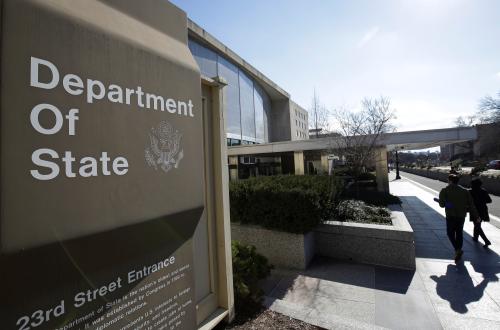
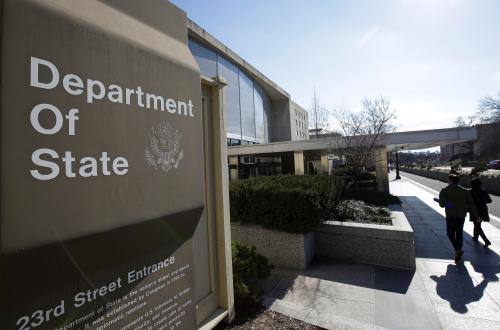
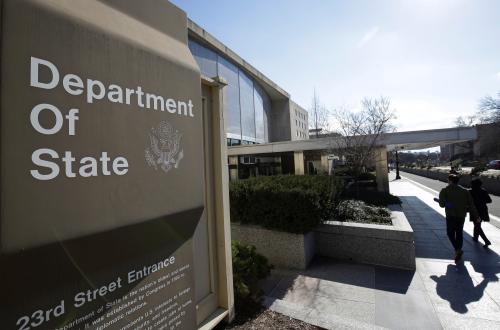

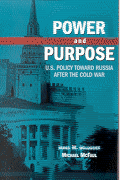
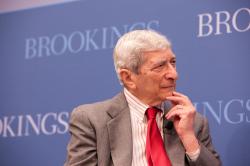


Commentary
The “Sonnenfeldt Doctrine” that wasn’t
October 17, 2019